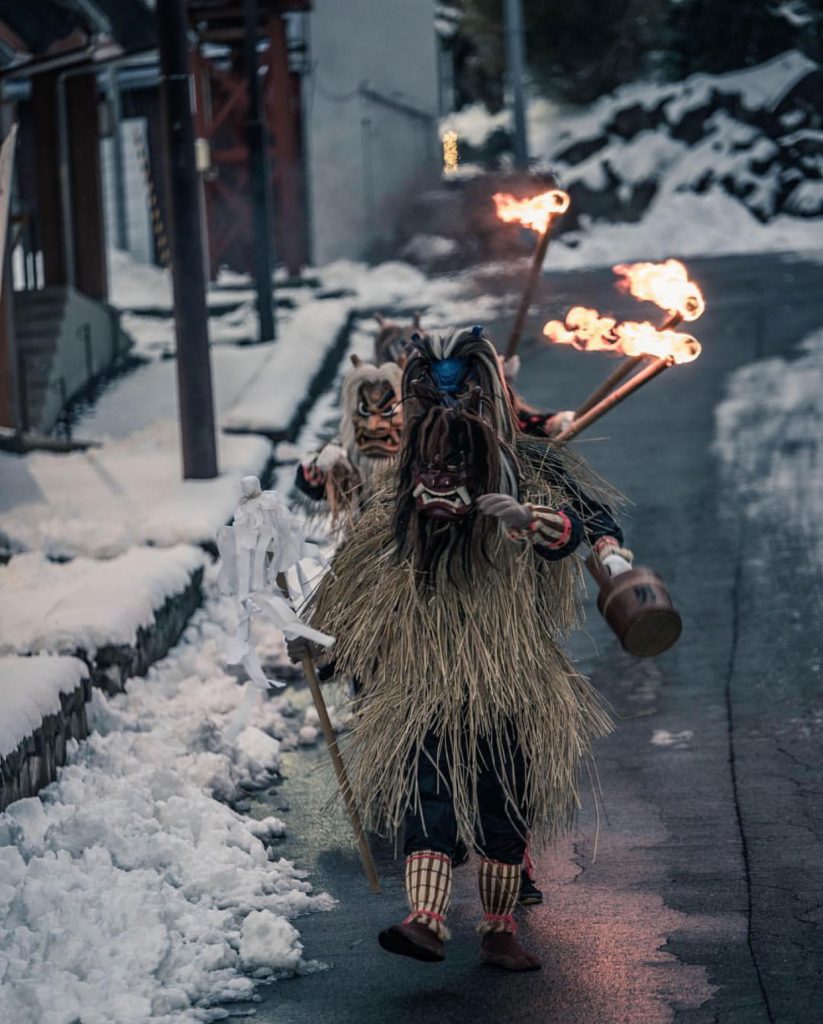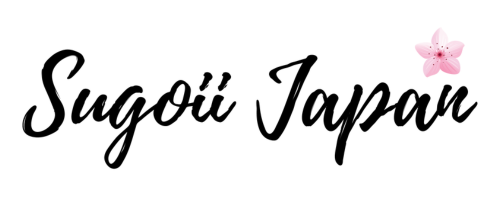If you’re a fan of Japanese traditional and pop culture, you would definitely have seen the various masks that are worn. From famous anime characters such as No Face in Spirited Away, to live performances by dancers at festivals, masks are a way of expressing emotion, celebrations, and throwing homage to the history of Japan.
If you’ve travelled through Japan before, you would have noticed masks being sold and on display at various places, including shrines, shops, events such as festivals, and at theatres.
The 10 Most Popular Traditional Japanese Masks
You might think that there are hundreds of different masks, however most are designs borrowed from a select few that have descended from mythology and history.
We’ll take you through some of the most popular ones that you’ll likely see today.
- Oni (Japanese Demon Mask)
- Noh Mask
- Tengu
- Men-yoroi
- Kitsune Fox Mask
- Hyottoko Comical Mask
- Okame (Otafuku Mask)
- Kendo Masks
- Hannya
- Kappa
1. Oni Masks – Japanese Demon

Oni means demon or monster in Japanese, and this mask is one of the most terrifying of all. It usually features a bright red face with an angry expression. Its eyes are usually a demonic yellow and it has long canine teeth.
Oni masks are usually worn at Setsubun, which is held on the last day of winter according to the Japanese calendar. This festival is also commonly known as the bean throwing festival, where people throw beans and chant for evil to leave and happiness to come.
During performances at this time, dancers will wear this mask. Parents might also wear this mask at home whilst their kids throw beans at them to “scare” them away.
You can also see Oni masks during the famous Namahage matsuri in Akita.
If you want to look like a Japanese Demon, get our Oni masks online here >>
2. Noh

These masks are very popular in Japan today due to their usage in Noh performances in theatres. Creating these intricate masks is actually considered an art.
One of the most interesting facts about these masks is that they can convey different emotions to the audience depending on the angle in which they are seen and how the lighting hits the mask.
Fun fact: there are around 250 types of Noh masks that exist today! Each mask will represent age, gender, and social ranking of human and nonhuman characters.
3. Tengu

Much like the Oni mask, the Tengu is another frightening mask. However, they are not monsters or demons. In fact, Tengu are believed to be the brave demi-gods who are the protectors and saviours of the mountains.
Tengu masks are depicted with red faces and angry expressions, with a long-pointed nose. This is because in the past, Tengu were believed to be more bird-like; however, as they became more human-like, their features changed but their nose stayed the same.
4. Men-yoroi

These masks were the armored masks worn by warriors and samurai. They were customisable according to the warrior’s preference and fit. They were also decorated according to the individual person.
The Somon style masks covered the entire face of the warrior, whereas the menpo masks only provided partial coverings for the face. These days, these types of masks are on display at museums around Japan for people to view and learn more about.
5. Kitsune – Japanese Fox Mask

Kitsune are mythical fox creatures that were believed to have been able to shapeshift and were believed to be messengers for Inari, the goddess of rice, commerce, and prosperity.
Kitsune masks or fox masks are worn by participants in Shinto festivals. Sometimes they may not wear the mask but instead apply the makeup like a Kitsune mask. Attendees at these festivals will also sometimes don the mask for fun.
The current globally famous anime Demon Slayer: Kimetsu no Yaiba depicts a scene where the main character receives a beautiful spell-bound Kitsune mask after completing this training.
We have Kitsune masks in our online store so feel free to check them out here >>
6. Hyottoko

The Hyottoko is one of the most unique masks. It depicts a childlike distorted facial expression that may seem humorous to foreigners. It shows a male with his mouth in an ‘O’ shape, as though he were whistling. In fact, he is meant to be blowing on a bamboo pipe.
In some Japanese dance performances at festivals, the person in the role of the clown will wear a Hyottoko mask.
Hyottoko is derived from the words “hi” (meaning fire), and “otoko” (meaning man).
7. Okame Japanese Mask

The Okame is the female counterpart of the Hyottoko. Again, it depicts a unique expression that may appear humorous to foreigners.
The Okame mask and the Hyottoko mask usually come together as a pair. When worn by a performer, those in the Okame mask usually perform over-the-top, silly dancing to elicit laughter.
Okame is believed to be a generous goddess who spreads good fortune. She is depicted as a jolly woman with a large, oval-shaped head and smiling eyes.
8. Kendo Masks

Kendo masks are usually worn for protection rather than for decorative or performative purposes, much like the Men-yoroi masks.
Kendo is the Japanese version of fencing, and you can imagine that when swinging around a long heavy sword, you will need to protect the face. More about the types of Japanese swords here.
These masks feature shoulder flaps that protect the neck and shoulders, and a full head gear with metal wiring across the face to protect it whilst enabling the wearer to still have vision.
9. Hannya

These are somewhat the female counterparts of Oni masks. They represent the female demons that resemble Oni, but most will have longer horns at the forehead section of the mask.
You will most likely see these masks used in Noh theatrical performances, worn by characters who are depicting jealousy or eeriness.
10. Kappa

Kappa are mythical Japanese river monsters that attack swimmers and challenge humans to sumo wrestling matches.
Kappa masks are probably the rarest type of masks on this list. You will not likely see it during Japanese festivals or displayed in shops as such. Rather, you’ll likely see them on ancient statues.
—
These are just a select few of the unique and interesting traditional Japanese masks. These days, due to the rise in popularity of anime around the world, you will also see many character masks being sold at festivals. They’re usually bright and colourful, made with plastic and are super cheap!
Which mask was your favourite? Let us know in the comments below.
Feel free to also check out our new blog post about Japan’s seven lucky gods.













cool